Active methods as a way to increase the effectiveness of learning
When training specialists, the implementation of the competency-based approach should provide for the widespread use of active and interactive forms of conducting classes in the educational process in combination with extracurricular work in order to form and develop the professional skills of students.
Leading teachers of the Department of Pharmaceutical and Toxicological Chemistry in the spring semester held a number of planned open classes using active methods with 4th-5th year students of the Pharmacy program.
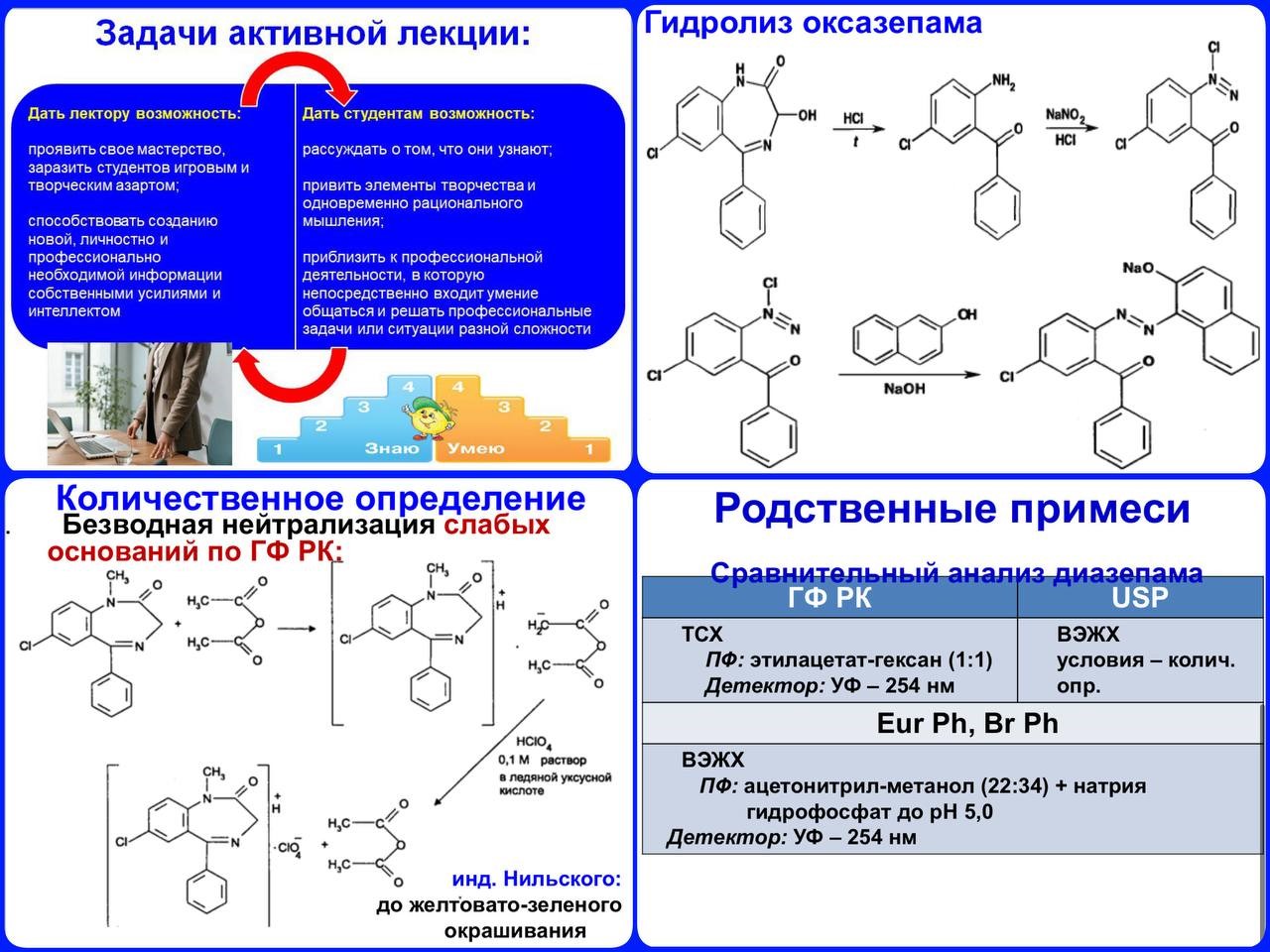
Thus, Prof. Ordabayeva S.K. held a lecture on pharmaceutical chemistry for the 4th year in the form of a press conference. The purpose of the lecture-press conference was not only the effective mastering by students of a special section of pharmaceutical chemistry on the analysis of drugs, benzodiazepine derivatives.

The lecturer summed up the results for the entire semester, analyzed the knowledge gained by students for future professional activities, for the development of interdisciplinary links with other academic disciplines. Students familiarized themselves with handouts on the topic of the lecture in advance, as a result of which they could prepare their questions on interesting and difficult to learn sections.

The effectiveness of the students' mastering of the material was checked by testing, and the students also answered the questions of the survey "Lecturer through the eyes of a student", where students could additionally give their comments and assessment of the teacher's activities in any form.
The lecture by Ass. Prof. Serikbayeva A.D. was held with 5th-year students on the subject "Toxicological Chemistry-2" using the active method "lecture-discussion". The topic was devoted to a pressing social problem - the illegal use of narcotics and methods of their chemical-toxicological analysis.
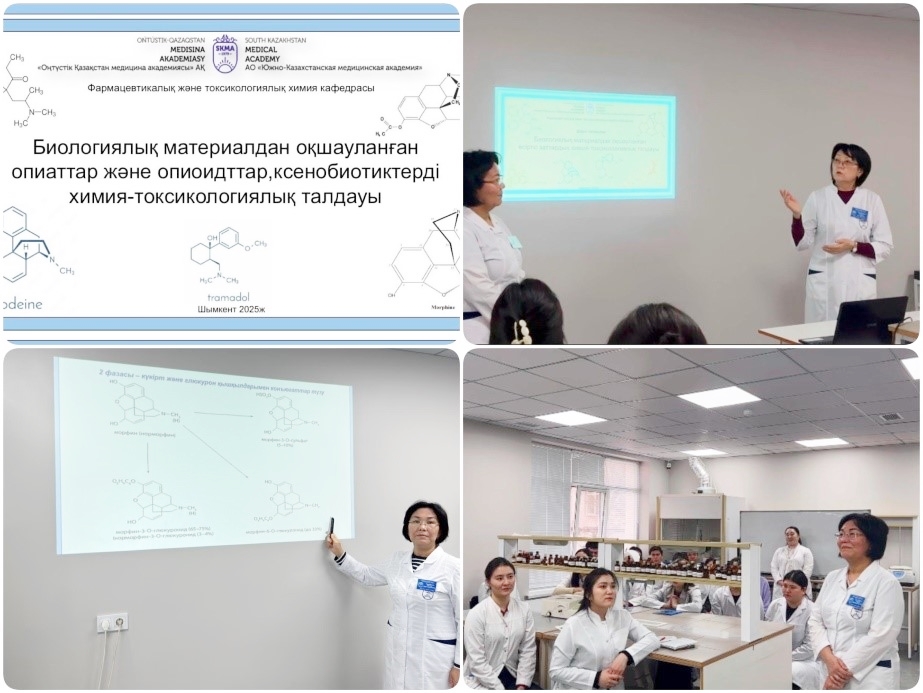
The specifics of the fight against illegal drug trafficking require the involvement of specialists of various profiles: criminologists, toxicologists, narcologists to correctly establish all the circumstances of the case. At the same time, one of the key areas is conducting forensic medical examinations of suspects in order to establish the fact of drug use, the results of which often depend on the results of laboratory studies of biological samples of the subject. To achieve this goal, students must have high theoretical training in the field of chemical-toxicological analysis of xenobiotics.
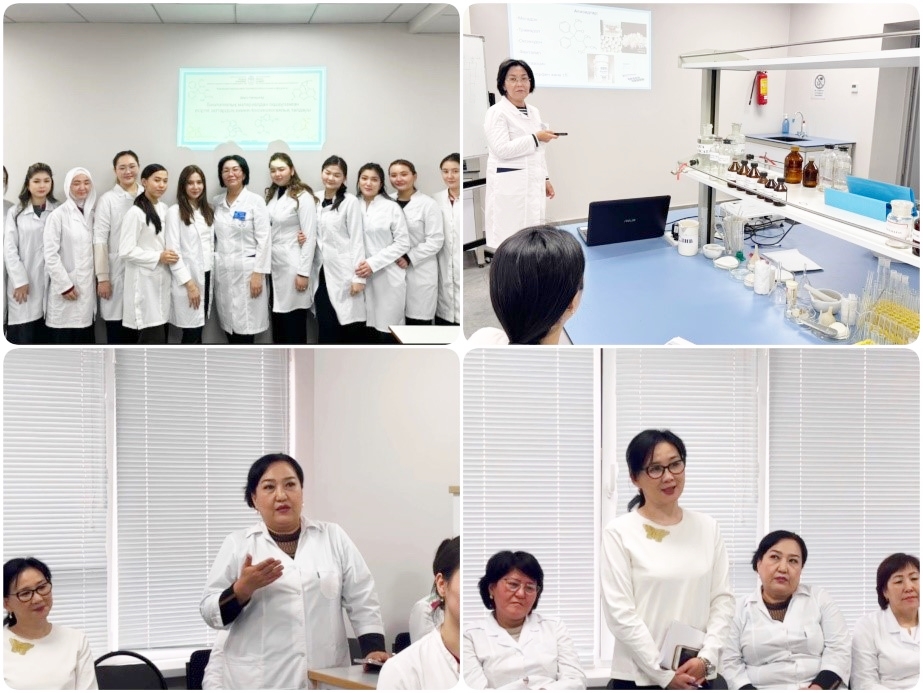
In connection with the above, at the present stage of higher education it is necessary to use various innovative teaching methods that help to deeply assimilate the material and consolidate the acquired theoretical knowledge. During the lecture, Serikbayeva A.D. discussed with the students the most pressing issues of chemical and toxicological analysis of apiates, apioids and cannabinoids. The lecturer skillfully maintained contact with the audience throughout the lecture, presenting the material in the form of a question and discussing it with the students. This allowed the teacher to better present the material for effective understanding and assimilation of the material. At the end of the lecture, students and teachers shared their impressions. The students expressed gratitude to the lecturer for such an interesting and multifaceted lecture.
Ass.Prof. Tursubekova B.I. held an open lesson on the topic: "Analysis of tablets" in the discipline "Pharmaceutical chemistry and standardization of drugs" with 2nd-year students of the accelerated department of the educational program "Pharmacy".
The lesson was conducted using research-oriented learning (RBL). It is known that RBL develops students' creative potential, forms a systematic approach to problem solving, the ability to use modern research methods, implement and evaluate the effectiveness of new technologies, analyze the results of research and their own practice, as well as self-education and self-improvement skills.
Students were given an assignment on the topic of the lesson in advance, within the framework of which they registered on the websites Scopus, Web of Science and RSCI, made a review of foreign literature: conducted a search, accumulation and processing of scientific information from Kazakhstani and international scientific databases.

The research work consisted of quality control of metamizole sodium tablets in the sections of identification, purity analysis and quantitative determination, as well as by the following indicators: disintegration, abrasion, dissolution, average weight, etc. To carry out the research work, students used chemical and physicochemical methods (spectral, chromatographic and pharmaco-technological).
At the open lesson, the students presented the results of their research work for defense: they revealed the relevance of the topic, showed the practical significance of non-steroidal anti-inflammatory drugs in medicine, and acquainted those present with the results of the research work done.
In addition to the Academy teachers, the open lesson was attended by Dr. Prabitha R. (JSS Academy of Higher Education Research, Musuru), who was on the academic mobility program, who highly appreciated the lesson.

Project-oriented learning was implemented in the discipline "Pharmaceutical Chemistry" to develop the skills of quality control and standardization of medicines in undergraduate students of the OP "Pharmacy".
The project topic "Study of dental films containing St. John's wort" is being studied by group B-FK-02-21, divided into three small groups (PharmaLab, Vitapharm, Pharmpower). Group leaders have been appointed, the task of each small group has been defined, senior lecturer of the department Karakulova A.Sh. has been appointed as a facilitator.
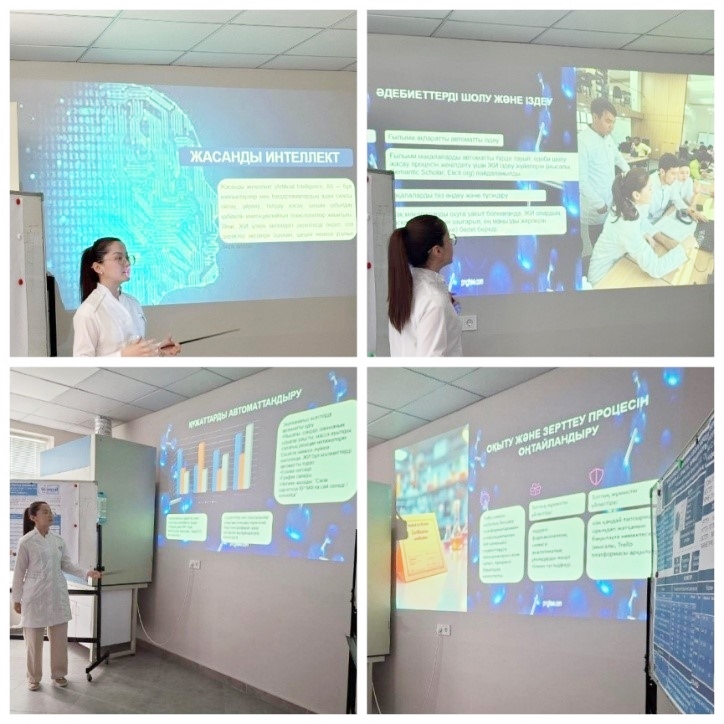
During the spring semester, the group twice (1-2 midterm control) conducted a report on the work done in the form of a presentation and videos. At the first stage, students registered and analyzed international scientific databases such as Scopus, Web of Science, Google Scholar, etc. to conduct a literature review.
At the second stage, the qualitative characteristics of dental films were studied, and their analysis was carried out using modern methods of analysis (ionometry, thin-layer chromatography, titrimetry) for compliance with the requirements of regulatory documentation.
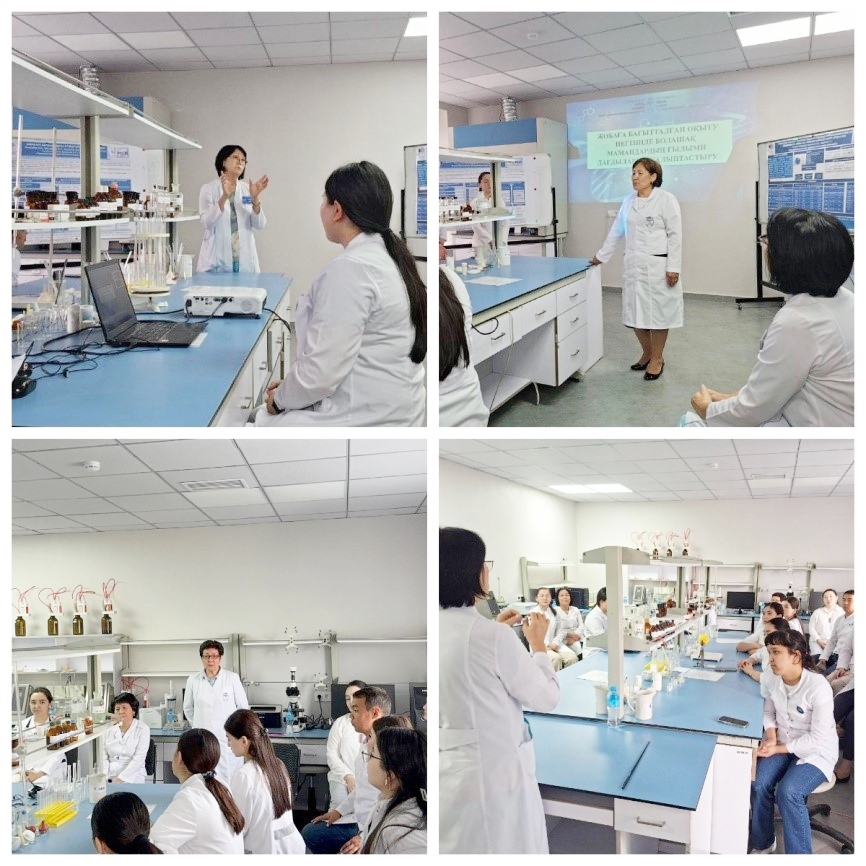
In the next semester, the project work will continue, it is planned to determine the quantitative content of active substances using spectral and chromatographic methods, based on the results of which a draft Temporary analytical regulatory document will be developed.